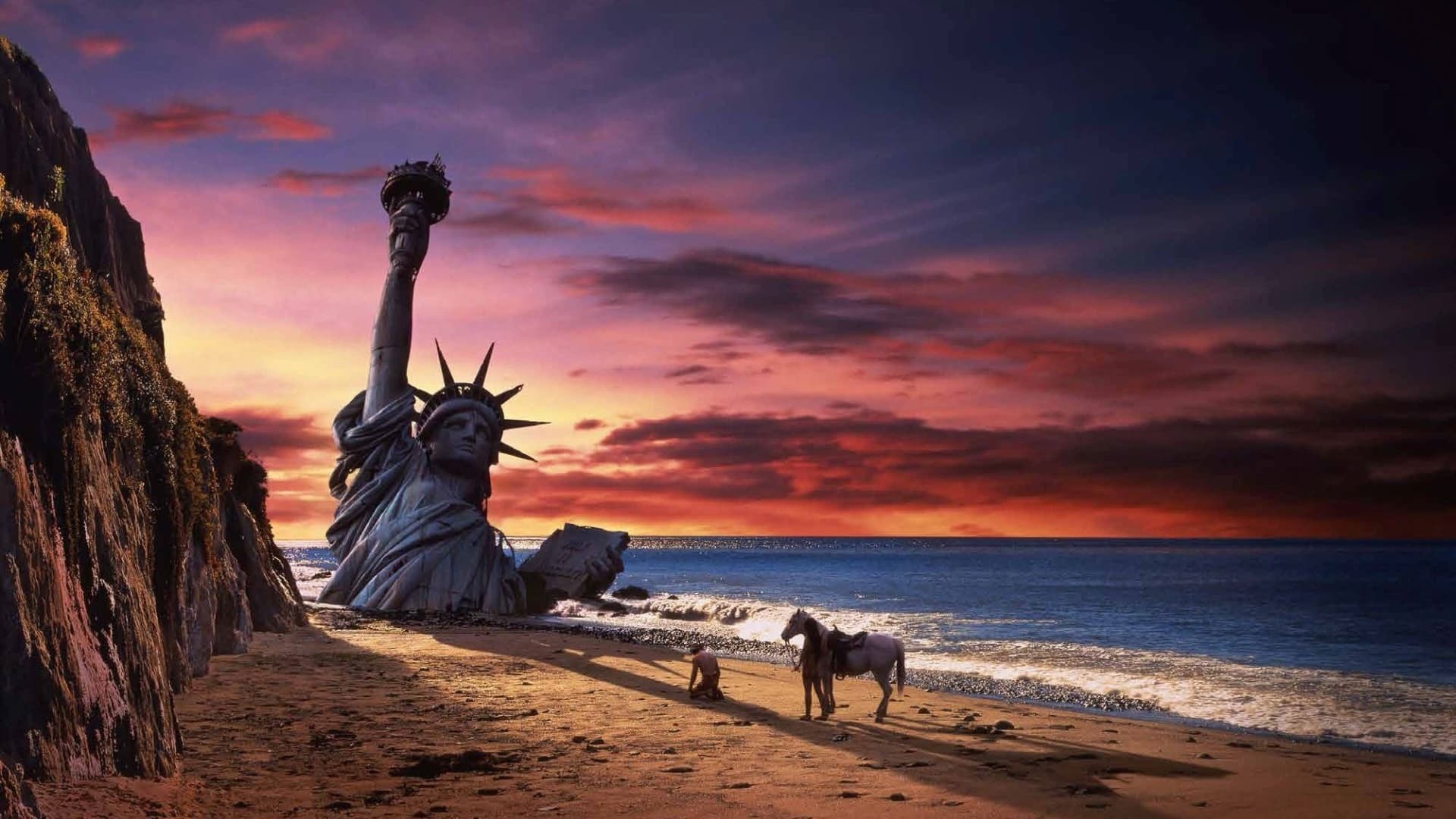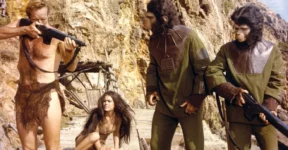In 1952, a former French spy, Pierre Boulle made a big strike when he released a novel titled The Bridge Over the River Kwai. The story is based on the plight of Allied POWs and civilians conscripted into forced labor by the Imperial Japanese Army to build a bridge for the notorious Burma-Siam railway (also known as the Death Railway). A film adaptation of the same name, directed by David Lean and released in 1957, won seven Academy Awards and three Golden Globe Awards.
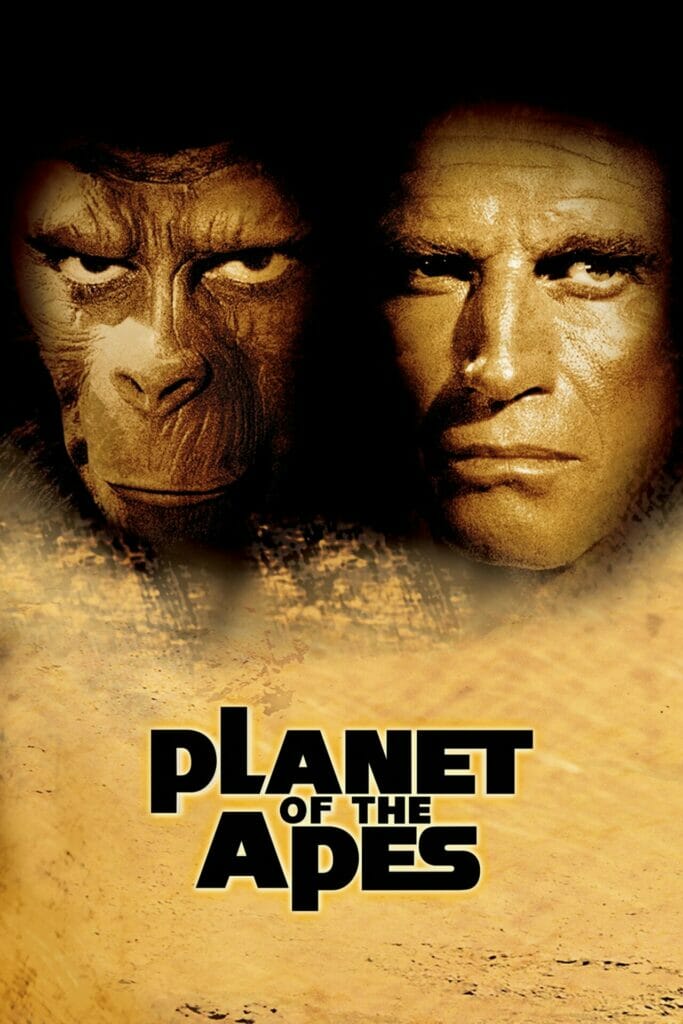
Boulle delivered a major hit again in 1963 with Planet of the Apes. He analyzed the social-political issues of the time period and took a glimpse at the distant future. In a similar fashion, a big-screen adaptation of the same name followed suit several years later. Director Franklin J. Schaffner put Charlton Heston – then one of Hollywood’s biggest names – into the role of the main character.
Premises in Novel and Film
The novel tells the story of a group of people who inadvertently embark on a time-travel experience during an interstellar journey. They landed on a habitable forested planet where apes are the dominant species. Humans are mute primitive savages hunted by the apes for sport. The novel describes the ape civilization as technologically advanced.
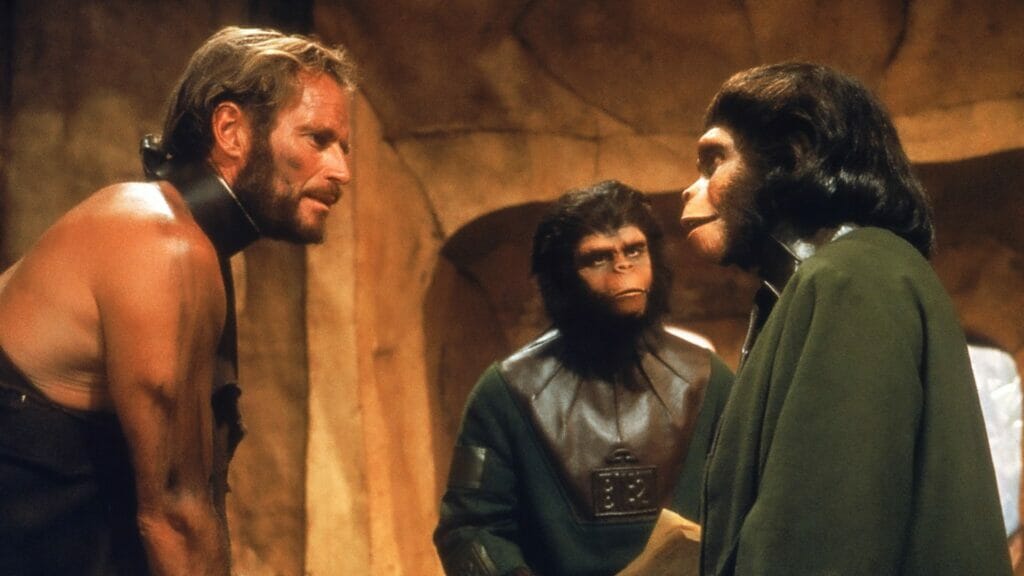
Although the film uses broadly the same premise, it strays far enough from the source material without being entirely unfaithful. There are many noticeable similarities between the film and the novel. For example, the ape society is governed by a caste system and the apes’ general condescending attitudes towards humans.
However, the film’s prologue and epilogue cannot be further distinguished from those in the novel. The opening scene in the film lets viewers know that a group of astronauts under the command of Colonel George Taylor is aware of the time dilation. Over the course of six months in deep space traveling near the speed of light, the crew have barely aged but the Earth has gone through a period of centuries.
The crew engages in a state of hibernation on the journey home, and the next thing they know is that they are in a strange world dominated by apes. They think the spaceship crash-lands on a planet far from Earth during their deep sleep, but in reality, the vehicle has always maintained its course. It is Planet Earth, more than two thousand years ahead of the crew’s time. A revelation comes in the epilogue, in which Taylor discovers the remnants of the Statute of Liberty. Whereas in the novel, the ending is more abstract as it involves a human child returning to Earth and finding the home planet also dominated by apes.
A Film for the Ages
Planet of the Apes (1968) is without a doubt an old film. In terms of cinematography and visual effects, it cannot compare to modern movies from the 21st century. However, its less explicit (yet strikingly perceptible) political and social overtones have managed to stand the test of time.
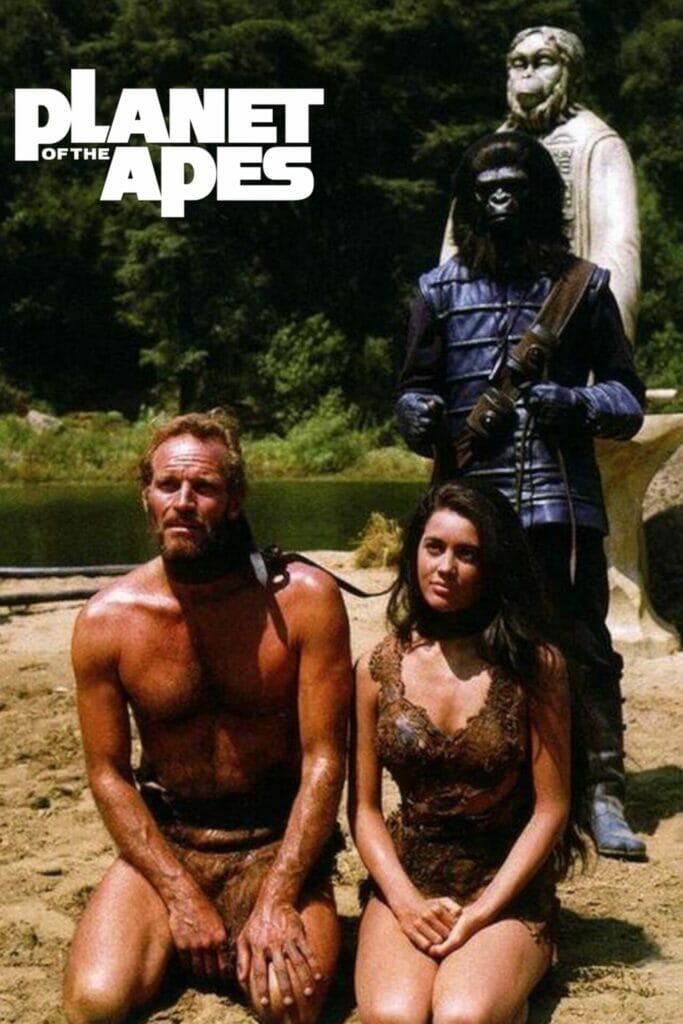
On the surface, it is a dystopian film where the apes’ world maintains a starkly authoritarian system of government with strict class divisions. Orangutans are political and religious leaders; chimpanzees belong in the intellectual community filled with doctors, scientists, and researchers; gorillas serve in the military forces. Humans delve at the bottom of the hierarchy, as slaves and game animals. There are subtle signs to point at a post-apocalyptic setting such as the spaceship’s onboard time indicator and the discovery of an archeological site full of advanced human artifacts. The subtlety comes to an end in the epilogue with the imagery of a ruined Lady Liberty as if it has been recklessly discarded.
Thanks to such a powerful ending scene, viewers come to a full realization of how Taylor’s escape from the ape society into the Forbidden Zone serves no purpose. Human civilization met its demise centuries ago in the aftermath of a nuclear war, which somehow left the ape species unaffected and triggered an ape evolution-revolution.
The main reason Planet of the Apes remains a pop-culture standard in present-day America is the relevance of its satirical commentaries. Within the film’s inverted realm where humans are enslaved and abused by apes, the audience is presented with a disturbing, albeit familiar, the notion of racial tension running in reverse. George Taylor as a male white American is put in a position of disadvantage in the face of blatant prejudice and intolerance.
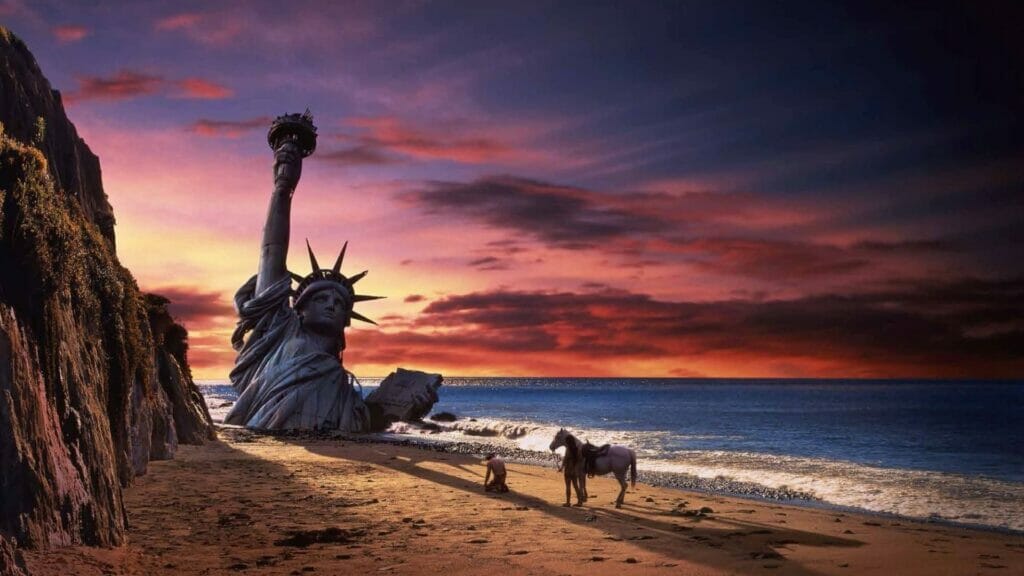
Much of the dynamics depict Taylor’s struggles to regain and maintain an equal standing with a dominant society that punishes just about everything it does not understand. All the subsequent conflicts, violent protests, love-hate relationships between the majority and minority, as well as the looming threat of nuclear disaster still resonate as strongly today as they did five decades ago. Each of the four sequels deals with a specific issue without leaving behind the subtext of the first film:
· Beneath the Planet of the Apes plays with the idea of an arms race
· Escape from the Plane of the Apes revolves around the animal cruelty issue
· Conquest of the Planet of the Apes aims to send a message about race war
· Battle of the Planet of the Apes offers a reminder about gun control
Planet of the Apes is a cultural symbol, especially among an American audience, as it almost perfectly mirrors the country’s long-standing conflicts with itself. It was a political film back then (and still is today), full of satirical messages disguised under an unlikely premise.
Planet of the Apes is a film like no other. When we saw it in the theater, we were stunned and thrilled by its surprise ending. Now it’s part of a thriving franchise that continues to grow its audience.
Do you like the POTA movie series? Which is your favorite? Let us know. We’d love to hear from you.
Other things you might want to know about.
Satirical commentaries in movies
According to cbr.com here are 10 of the best satirical films. These films bring us strong messages through comedy or ridicule. reddit.com tells about 2 movies that also teach a lesson. ‘Sorry to Bother You’ shows capitalism and modern work mentality. ‘Shrek’ shows an obsession with beauty and the need for approval from others. Planet of the Apes also can teach us lessons about how to treat others.
Here are the 10 films:
- Sorry to Bother You
- Not Okay
- Legally Blonde
- Ingrid Goes West
- Heathers
- The Truman Show
- Borat
- Fight Club
- Nope
- White Chicks
Director of Planet of the Apes Franklin J. Schaffner (1920-1989)
According to rottentomatoes.com here are films directed by Franklin J. Schaffner.
- Welcome Home (1989)
- Lionheart (1987)
- Yes, Giorgio (1982)
- Sphinx (1981)
- The Boys From Brazil (1978)
- Islands in the Stream (1977)
- Papillon (1973)
- Nicholas and Alexandra (1971)
- Patton (1970)
- Planet of the Apes (1968)
- The Double Man (1967)
- The War Lord (1965)
- The Best Man (1964)
- The Stripper (1963)
Bridge Over River Kwai, Planet of the Apes-what other books did Pierre Bouelle write?
According to thriftbooks.com here are other books that Pierre Bouelle wrote.
* Garden on the Moon
- The Virtues of Hell
- Le Bourreau (The Executioner)d
- S.O.P.H.I.A.
- The Whale of the Victoria Cross
- Not the Glory
- Desperate Games
- The Marvelous Palace
- My Own River Kwai
- Great War Stories
- An Impartial Eye
- The Good Leviathan
- Ears of the Jungle
- Mirrors of the Sun
- Trouble in Paradise
- A Noble Profession
- The Test
- The Other Side of the Coin
- The Face

